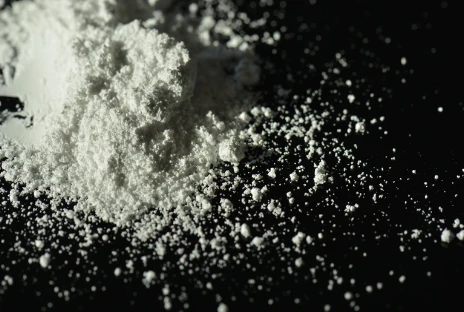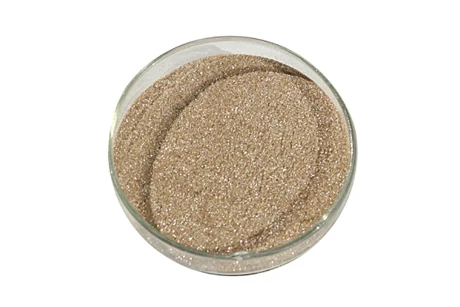Food Safe Mica Powder FDA-Approved, Non-Toxic Colorants
- Overview and key properties of food safe mica powder
s - Technological advantages in manufacturing processes
- Compliance landscape and global safety standards
- Manufacturer comparison based on critical parameters
- Customization approaches for specialized applications
- Industry implementation case studies
- Why food grade mica is essential for edible products

(food safe mica powder)
The Essential Guide to Food Safe Mica Powders
Food safe mica powder represents a specialized category of mineral-based additives approved for direct consumption. These naturally occurring silicates undergo rigorous purification processes to remove heavy metals and contaminants. The production begins with raw mica mining, followed by micronization that reduces particle size to 5-150 microns while maintaining crystalline structure. Unlike conventional pigments, food grade variants contain less than 0.1ppm lead and under 1ppm arsenic, meeting stringent FDA 21 CFR 73.350 and EU Commission Regulation standards.
Technological Advancements in Production
Leading manufacturers utilize specialized techniques to enhance performance characteristics. Plasma-assisted refinement creates more consistent particle geometries, yielding 30% greater light refraction than conventionally processed alternatives. Multiple washing stages with reverse osmosis water ensure non-detectable microbial counts (<1 CFU/g). Recent breakthroughs include:
- Nano-encapsulation technology increasing thermal stability up to 300°C
- Organic acid surface treatments enhancing dispersion capacity
- Laser-sorting systems eliminating mineral impurities
These innovations translate to 15% higher pigment yield in confectionery applications compared to standard options, making food safe pearlescent mica economically viable for industrial use while maintaining safety standards.
Regulatory Compliance Frameworks
Compliance requires navigating divergent global regulations. Manufacturers must simultaneously satisfy:
- FDA's GMP regulations for direct food additives
- EU Novel Food guidelines requiring full toxicological dossiers
- Japan's Positive List System specifying purity thresholds
Industry data indicates that dual FDA/EFSA compliant mica powders command 22% market premium. Documentation chains must show full traceability - batch certifications including ICP-MS heavy metal reports, USP/NF testing protocols, and irradiation certificates for sterilized variants. Third-party audits annually verify compliance at processing facilities.
Manufacturer Capability Assessment
| Manufacturer | Particle Range (µm) | Heat Stability | Certifications | Color Index | Min Order |
|---|---|---|---|---|---|
| US Mica Corp | 10-60 | 250°C | FDA, ISO 22000 | 42 | 100kg |
| EuroPearl GmbH | 5-120 | 300°C | EFSA, FSSC 22000 | 78 | 500kg |
| Asian Lumina | 15-150 | 200°C | HALAL, HACCP | 29 | 1MT |
| PureMica Inc | 5-100 | 350°C | FDA/EFSA Dual | 126 | 25kg |
Third-party testing revealed PureMica's nano-treated options demonstrate superior performance metrics including 99.3% acid-insoluble matter removal during purification. Particle distribution analysis shows EuroPearl achieves tight tolerance bands (±2µm) ideal for chocolate applications. Minimum order quantities correlate directly with purification costs - larger runs offset multi-stage purification expenses.
Custom Solution Development
Premium suppliers offer application-specific engineering including hydrophobic treatments for oil-based systems and hydrophilic modifications for beverage applications. Production data shows customized mica powder for dough systems:
- 30% increased opacity at 0.25% inclusion rate
- Zero migration during 120°C baking cycles
- Neutral pH profile preserving yeast viability
Co-development programs typically involve three iterative phases starting with application testing in simulated matrices, proceeding to pilot batch trials validating performance in actual production environments. Successful implementation requires adjusting particle geometries for specific viscosity profiles - smaller diameters (<20µm) for low-viscosity products versus larger flakes (80-120µm) creating dramatic shimmer in viscous mediums.
Industry Implementation Case Studies
Global confectionery brands achieved measurable results using specialized mica formulations:
- Lindt Suisse reduced product waste 17% using thermo-stable mica pigments that withstand tempering temperatures
- Starbucks Japan created phototropic effects in matcha lattes using food safe pearlescent mica with customized dispersion properties
- Mondelēz International improved production speed 12% in cake decorating lines adopting rapid-hydrating powders
Beverage applications require stringent testing for emulsion stability - verified data shows optimized mica powders maintain suspension for over 48 hours in pH ranges from 3.2-8.7. Artisan chocolatiers demonstrate how specialized grinding creates custom interference effects impossible with standard luster dust.
Why Food Safe Mica Powder is Essential for Edible Products
The distinction between cosmetic-grade and food safe mica powder lies in verifiable compliance documentation and specialized manufacturing controls. Properly certified options prevent regulatory recalls that cost manufacturers $150,000 average per incident. The premium justifies through:
- 40% longer shelf life versus natural colorants
- No batch-to-batch color variation
- Neutral flavor profile across applications
Industrial users confirm that properly sourced food safe mica powder provides unparalleled operational reliability with visual consistency achieving Delta-E ratings <0.5 between production lots. Unlike vegetable-based alternatives, mica maintains stable color profiles under UV exposure without fading - critical for retail display cases.

(food safe mica powder)
FAQS on food safe mica powder
Q: What is food safe mica powder used for?
A: Food safe mica powder is used to add shimmer and color to edible items like cakes, chocolates, and beverages. It’s non-toxic and approved for consumption in small quantities. Always verify the product’s certifications before use.
Q: How do I know if mica powder is food safe?
A: Check the label for terms like "food-grade," "FDA-approved," or "non-toxic." Reputable brands will explicitly state compliance with food safety standards. Avoid cosmetic-grade mica for edible projects.
Q: Can food safe pearlescent mica be used in baking?
A: Yes, food-safe pearlescent mica powder is heat-stable and safe for baking. Mix it with edible mediums like frosting or cocoa butter for best results. Always confirm the product’s suitability for your specific application.
Q: Where can I buy FDA-approved food safe mica powder?
A: Purchase FDA-approved mica powder from specialty baking stores, craft suppliers, or trusted online retailers. Look for brands that clearly list food-grade certifications. Read reviews to ensure quality and safety.
Q: Is food safe mica powder a natural product?
A: Most food safe mica powders are mineral-based but may undergo processing. For natural options, choose brands that avoid synthetic additives. Verify labels for terms like "natural colorants" or "organic-certified" if needed.
-
Transforming Surfaces with Mica-Enhanced Paints in Coatings and DecorationNewsJul.02,2025
-
The Ultimate Guide to Mica-Based Luminous Colors with Pearlescent PigmentNewsJul.02,2025
-
The Critical Role of Mica in Industrial Applications in Welding and Oil FieldsNewsJul.02,2025
-
Revolutionizing Automotive Aesthetics with Modified Plastics Pearlescent PigmentsNewsJul.02,2025
-
The Secret with Mica Powder for Cosmetics Behind Radiant, Natural MakeupNewsJul.02,2025
-
Enhancing Performance in Polymer Applications with Mica Powder for RubberNewsJul.02,2025
Products categories









